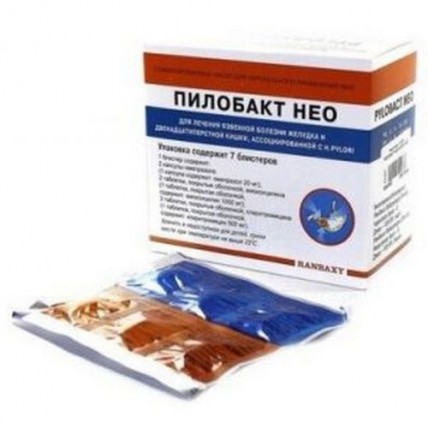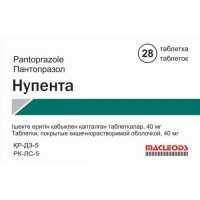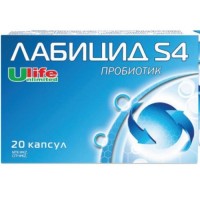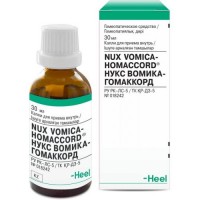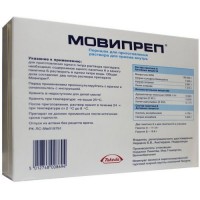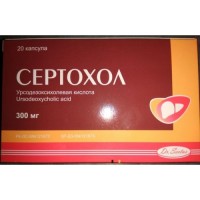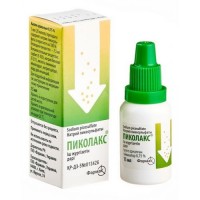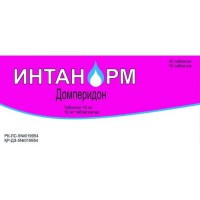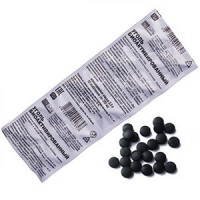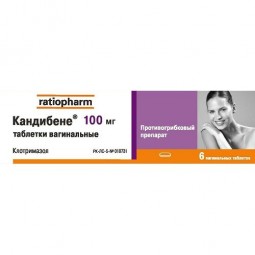The instruction for medical use
of Pilobakt® medicine a neo
Trade name
of Pilobakt® the neo
International unlicensed name
Is not present
the Dosage form
the Combined set for oral administration
Klaritromitsin's List
one tablet contains
active agent - klaritromitsin 518 mg (it is equivalent to a klaritromitsin of anhydrous 500 mg),
excipients: microcrystalline cellulose, povidone (PVP K-30), magnesium stearate, stearic acid, talc purified silicon dioxide colloidal anhydrous, sodium of a kroskarmelloz (Ac-Di-Sol),
structure of a cover: a hydroksipropilmetiltsellyuloza, hydroxypropyl cellulose, propylene glycol, sorbitan monooleate, the titan E171 dioxide, varnish quinolinic yellow E 104,
the structure blackened the vanillin, talc purified: black ink (Opacode S-1-17823 Black), isopropyl alcohol @,
structure of Opacode S-1-17823 Black: % Glaze-45 shellac (20%) in ethanol, isopropyl alcohol, ferrous oxide black (E172), N-butyl alcohol, propylene glycol, solution of ammonia of 28%.
Amoxicillin
one tablet contains
active agent - amoxicillin trihydrate of 1149.43 mg (it is equivalent to amoxicillin of 1000 mg),
excipients: microcrystalline cellulose, sodium of starch glikolit, silicon dioxide colloidal anhydrous (Aerosil 200), talc cleaned, magnesium stearate,
structure of a cover: a hydroksipropilmetiltsellyuloza (5-6cps), the titan E171 dioxide, permaseat @, varnish sanst the yellow E110, talc purified, polyethyleneglycol 400.
Omeprazolum
one capsule contains
active agent - pellet omeprazolum (8.5%) of 235.29 mg,
excipients - granules a nonpareil,
structure of a cover of capsules
a lid: diamond blue E133, karmoizin (azoruby) E 122, methylparaben, propylparaben, gelatin,
body: methylparaben, propylparaben, karmoizin (azoruby) E 122, gelatin,
structure of one pellet
active agent – omeprazolum of 20 mg,
excipients: granules a nonpareil (starch and sucrose), sucrose, starch corn, Mannitolum, povidone, talc purified sodium lauryl sulfate, dinatrium hydrophosphate anhydrous,
structure of an enterosoluble covering for granules: hydroksilpropiltsellyuloza phthalate, diethyl phthalate, titan E171 dioxide.
-
ShchESTVOOpisanie
Klaritromitsin
Tabletki, film coated light yellow color, an oval form, with a biconvex surface with an inscription black ink CXT 500 on one party
Tabletki's Amoxicillin, film coated orange color, a capsulovidny form, with a biconvex surface
Omeprazolum
the Solid self-closed gelatin capsules, the 2 size, with a lid of blue color and the transparent pink body. Contents of capsules – white or almost white spherical granules
Pharmacotherapeutic group
Antiulcerous drugs and drugs for treatment of a gastroezofagalny reflux. The combination of drugs for Helicobacter pylori eradikation
the ATX A02BD05 Code
the Pharmacological
Pharmacokinetics Klaritromitsin Klaritromitsin properties after intake is quickly and well soaked up from the digestive tract (DT). In the course of metabolism – the first forms an active metabolite 14-hydroksiklaritromitsin. Klaritromitsin can be applied irrespective of meal as food does not affect bioavailability of a klaritromitsin at oral administration, but the beginning of absorption of a klaritromitsin and forming 14 hydroxymetabolites detains a little. The pharmacokinetics of a klaritromitsin is not linear, however, equilibrium concentration of drug in blood is established within 2 days after reception. At use of 500 mg of a klaritromitsin three times a day the concentration of a klaritromitsin in blood plasma increases in comparison with a dose of 500 mg twice a day. Concentration of a klaritromitsin in body tissues many times over exceed concentration in blood serum. The highest concentration were are defined in tonsillar and pulmonary fabrics. At therapeutic doses of 80% of a klaritromitsin contacts proteins of plasma. Klaritromitsin gets into a mucous membrane of a stomach. The maintenance of a klaritromitsin in a mucous membrane of a stomach is higher at use of a klaritromitsin together with omeprazolum, than at monotherapy klaritromitsiny. At administration of drug on 250 mg twice a day, 15-20% of a klaritromitsin eliminirutsya by kidneys in not changed look, at a dose of 500 mg twice a day – about 36%.
In the form of a 14-hydroksiklaritromitsin with urine 10-15% of a dose are removed. The most part of a dose is removed in the form of metabolites with bile, 5-10% are excreted with bile in not changed look.
Amoxicillin
Amoxicillin after oral administration quickly and almost is completely soaked up in a GIT, does not collapse in acidic environment of a stomach. Food does not influence its absorption. The maximum concentration of amoxicillin in blood plasma is reached in 1–2 h after reception of tablets of 250 mg and 500 mg in the range of 3.5 mkg/ml - 5.0 mkg/ml and 5.5 mkg/ml - 7.5 mkg/ml, respectively. Linking with proteins of blood plasma makes 20%. Amoxicillin is widely distributed in fabrics, mucous membranes and liquids of an organism, except for cerebrospinal fluid, except those cases when there is an inflammation of a soft meninx. After orally accepted dose in serum drug is defined in 8 hours. Elimination half-life of amoxicillin makes 61.3 min. 60% of the accepted dose is excreted in not changed view with urine by canalicular secretion and glomerular filtration. After intake about 60% of a dose of amoxicillin it is found in 6 - 8 hours in urine.
Patients should be careful with a renal failure at administration of drug as amoxicillin is more emitted through kidneys. At elderly patients it is necessary to be careful with reduced function of kidneys when choosing a dose and it is necessary to control renal function.
Omeprazolum
Omeprazolum is unstable in acidic environment therefore it is accepted inside in the form of kishechnorastvorimy granules in capsules. Absorption happens in a small intestine and usually comes to an end within 3-6 hours. The bioavailability of omeprazolum at single dose of 20 mg is about 35%. After repeated doses the bioavailability increases approximately by 60%. Joint meal does not affect bioavailability. Linking with proteins of plasma of omeprazolum makes about 95%. Elimination half-life of omeprazolum makes 40 minutes of blood plasma. Omeprazolum is metabolized mainly in a liver. The identified metabolites in plasma - sulphidic, sulfonic derivatives of omeprazolum and hydroxyomeprazolum - have no anti-secretory activity. About 80% of metabolites are allocated with urine, other 20% with bile.
The bioavailability of omeprazolum significantly does not izmenenyatsya at patients with a renal failure. The AUC area under a curve of plasma concentration is increased at patients with a liver failure, but any tendency to cumulation of omeprazolum was not revealed. At elderly patients the omeprazolum elimination decreases a little, and the bioavailability increases. However at elderly correction of a dosage is not required.
The pharmacodynamics
Triple therapy by omeprazolum, klaritromitsiny and amoxicillin provides the high frequency of an eradikation (85-94%) at good tolerance and convenient observance of the ordered scheme of treatment. Amoxicillin and klaritromitsin have bactericidal effect on Helicobacter pylori. One of advantages of this scheme of treatment is that there were no messages about development of resistance to amoxicillin yet. This scheme is effective against Helicobacter pylori both sensitive, and resistant to nitroimidazoles.
Omeprazolum reduces secretion of hydrochloric acid, thereby suppressing growth of Helicobacter pylori and providing favorable conditions for antimicrobic action. It is proved that simultaneous introduction of a klaritromitsin with omeprazolum positively affects pharmacokinetic properties of both drugs. Other advantage of a combination - a short course of treatment (1 week) that provides convenience at treatment.
Observance of the ordered scheme of treatment provides an eradikation of Helicobacter pylori and prevents development of resistance of Helicobacter pylori to antibiotics.
Klaritromitsin suppresses synthesis of protein in a microbic cell, connecting 50S a subunit of a ribosomalny membrane of bacteria. It is active concerning aerobic and anaerobic gram-positive and gram-negative microorganisms. The Minimum Overwhelming Concentration (MOC) of a klaritromitsin is twice lower, than erythromycin MPK. The metabolite of a klaritromitsin 14-hydroksiklaritromitsin - also has antibacterial activity.
MPK for H.pylori of a 14-hydroksiklaritromitsin is equal to MPK of a klaritromitsin, except for Haemophilus influenzae concerning which its activity twice higher than activity of a klaritromitsin.
Klaritromitsin is usually active against the following organisms of in vitro Gram-positive bacteria: Staphylococcus aureus (Methicillinum - sensitive), Streptococcus pyogenes (hemolytic streptococcus of group A) an alpha and hemolytic streptococcus (viridans groups), Streptococcus (Diplococcus) pneumoniae, Streptococcus agalactiae, Listeria monocytogenes.
Gram-negative bacteria: Haemophilus influenzae, Haemophilus parainfluenzae, Moraxella (Branhamella) catarrhalis, Neisseria gonorrhoeae, Legionella pneumophila, Bordetella pertussis, Helicobacter pylori, Campylobacter jejuni.
Mycoplasma: Mycoplasma pneumoniae, Ureaplasma urealyticum.
Other organisms: Chlamydia trachomatis, Mycobacterium avium, Mycobacterium leprae, Mycobacterum kansasii, Mycobacterium chelonae, Mycobacterium fortuitum, Mycobacterium intracellulare.
Anaerobe bacterias: a macrolead - sensitive Bacteroides fragilis, Clostridium perfringens, Peptococcus species, Peptostreptococcus species, Propionibacterium acnes.
Safety and efficiency of a klaritromitsin at children are younger than the 6th monthly age is not established.
Amoxicillin — an antibiotic of group of penicillin with a wide range of the bactericidal action connected with ability to inhibit synthesis of a cell wall of bacteria. Amoxicillin is similar to ampicillin in its bactericidal action against susceptible microorganisms during a stage of active replication.
The wide range of the microorganisms sensitive to bactericidal effect of amoxicillin includes:
Gram-positive aerobes: Streptococcus faecalis, Streptococcus pneumonia, Streptococcus pyogenes, Streptococcus viridans, Staphylococcus aureus (penicillin - sensitive), Corynebacterium species, Bacillus anthracis, Listeria monocytogenes,
Gram-negative aerobes: Haemophilus influenzae, Escherichia coli, Proteus tirabilis, Salmonella species, Shigella species, Bordetella pertussis, Brucella species, Neisseria gonorrhoeae, Neisseria meningitides, Vibrio cholerae, Pasteurella septica,
Anaerobe bacterias: Clostridium species,
Helicobacter: Helicobacter pylori.
Omeprazolum suppresses secretion of gastric acid, being inhibitor of the proton pump of a stomach in covering cell mucous a stomach.
Suppressing secretion of gastric acid by a specific ingibition of an enzymatic system (H+-K+-ATF-aza) on the secretory surface of covering cells of a stomach, reduces rn a stomach and promotes healing of an ulcer.
This effect of omeprazolum occurs within the first hour after reception and proceeds within 24 hours. Omeprazolum reduces levels of basal and stimulated secretion irrespective of the irritant nature.
Single dose of 20 mg of omeprazolum inside provides fast and effective suppression of secretion of gastric acid with the maximum effect reached by 4th day after treatment. At patients with a round ulcer of a duodenum for 24 h the oppression of secretion of acid in a stomach on average for 80% is reached. In 24 h after intake of omeprazolum the decrease in peak of products of acid after stimulation by Pentagastrinum is about 70%.
Indications
- N.'s eradikation of pylori at N. pylori the associated diseases of a stomach and a 12-perstny gut (gastroduodenit, the peptic ulcers, gastropathies induced by intake of non-steroidal anti-inflammatory drugs and associated with H. pylori)
the Route of administration and doses
One Pilobakt® blister neo is intended for use within 1 day. Пилобакт®нео it is necessary to accept in the morning and in the evening on 1 capsule of omeprazolum before food in 30 min. and on 1 tablet of a klaritromitsin and amoxicillin after a meal. The general duration of therapy is 7 days.
Capsules and tablets should be swallowed entirely. At elderly patients it is necessary to diagnose or exclude renal and hepatic dysfunctions and to appoint with care.
Side effects
Klaritromitsin
- allergic reactions (urticaria, an anaphylaxis, Stephens-Johnson's syndrome, a toxic epidermal necrolysis)
- an arthralgia, myalgia
- a glossitis, stomatitis, anorexia, vomiting, decolouration of language, change of coloring of teeth, pancreatitis, hepatocellular, cholestatic hepatitis with jaundice or without jaundice
- dizziness, concern, behavioural changes, confusion of consciousness, convulsion, depersonalization, a disorientation, hallucinations, insomnia, dreadful dreams, paresthesia, psychosis, a ring in ears, change of sense of smell, a food faddism or loss of taste
- lengthening of an interval of QT, ventricular arrhythmia, including ventricular tachycardia
- interstitial nephrite
- kolkhitsinovy intoxication
- thrombocytopenia, a leukopenia, a neutropenia, increase in enzymes of a liver, a hypoglycemia, increase in a prothrombin time, high serumal creatinine
Amoxicillin
- nausea, vomiting, diarrhea, hemorrhagic/pseudomembranous colitis
- an anaphylaxis, a serum disease, erythematic makulopapulezny rash, a multiformny erythema, Stephens-Johnson's syndrome, exfoliative dermatitis, a toxic epidermal necrolysis, sharp exanthematous pustullez, a vasculitis, urticaria
- increase in nuclear heating plant, ALT, cholestatic jaundice, a hepatic cholestasia, acute cytolytic hepatitis
- candidiasis, a crystalluria
- anemia, including hemolytic anemia, thrombocytopenia, a Werlhof's disease, an eosinophilia, a leukopenia, an agranulocytosis
- reversible hyperactivity, arousing, concern, insomnia, confusion of consciousness, a spasm, change of behavior, dizziness
- change of coloring of teeth (brown, yellow or gray coloring) which takes place after their cleaning.
Omeprazolum
- reactions of hypersensitivity (urticaria, an anaphylaxis, an acute anaphylaxis, angioneurotic swelled, a bronchospasm)
- fatigue, an indisposition, fever
- a stethalgia or stenocardia, tachycardia, bradycardia, trembling, high blood pressure, peripheral hypostases
- a gynecomastia
- dryness in a mouth, a language mucosal atrophy, stomatitis, anorexia, pancreatitis, irritation of intestines, decolouration a calla, gullet candidiasis
- liver diseases, a liver failure, hepatic encephalopathy, a hepatocellular carcinoma, cholestatic hepatitis, jaundice, increase in enzymes of a liver (ALT, AST, GGT, alkaline phosphatase, bilirubin)
- a hypoglycemia, a hyponatremia
- increase in weight
- muscle weakness, myalgia, muscular spasms, the general pains, a sore throat
- nasal bleeding
- a ring in ears, a food faddism
- a sleep disorder, a depression, excitement, aggression, hallucinations, insomnia, neurosis, apathy, drowsiness, concern, paresthesia
- heavy generalized skin reactions (toxic epidermal necrolysis, Stephens-Johnson's syndrome, a multiformny erythema, a photodermatitis, a small tortoiseshell, rash, an itching, petechias, a purpura, baldness, xeroderma, a hyperhidrosis)
- an atrophy of an optic nerve, the previous ischemic neuropathy of an optic nerve, an optic neuritis, a xerophthalmus syndrome, irritation of eyes, a veil before eyes, doubling in eyes
- interstitial nephrite, a hamaturia, a proteinuria, increase in creatinine of serum, a pyuria, urinary tract infection, a glucosuria, frequent urination, pain in testicles
- an agranulocytosis, hemolytic anemia, a pancytopenia, a neutropenia, anemia, thrombocytopenia, a leukopenia,
the Contraindication leukocytosis
- hypersensitivity to omeprazolum, a klaritromitsin, macroleads or components of drug
- hypersensitivity to penicillin, beta laktamnym to antibiotics or cephalosporins
- co-administration of derivatives of an ergot, tsizaprid, Pimozidum, a terfenadin, an astemizola (lengthening of an interval of QT, cardiac arrhythmia, including ventricular tachycardia, fibrillation of ventricles is possible, torsade de pointes of ventricles)
- a stomach ulcer malignancy (it is necessary to exclude before an initiation of treatment omeprazolum as at treatment of Pilobakt®neo the reduction of symptomatology is noted and production of the correct diagnosis will be delayed)
- joint intake of omeprazolum with atazanaviry
- sharing of a klaritromitsin with ergotamine or dihydroergotamine (the ergotaminovy intoxication which is shown an angiospasm, ischemia of extremities and other bodies can develop, including the central nervous system)
- children's and teenage age up to 18 years
- pregnancy and the period of a lactation
- an infectious mononucleosis and leukemoid tests
- a heavy liver and renal failure with clearance of creatinine less than 30 ml/min.
- hereditary intolerance of fructose or malabsorption of glucose galactose
Medicinal interactions
Plasma concentration at combined use of omeprazolum and a klaritromitsin increase. This useful interaction of two drugs for H.pylori eradikation. There is no interaction with metronidazole or amoxicillin.
Klaritromitsin in a dose of 500 mg each 8 h was appointed in a combination with omeprazolum in a dose of 40 mg a day the healthy adult. Increase in the maximum plasma concentration (Cmax) by 30%, the areas under curve (AUC) was noted - for 89% and elimination half-life (T1/2) for 34%. The average rn a stomach (per day) made 5.2 when only omeprazolum, and 5.7 when it was at the same time entered klaritromitsin was entered.
Klaritromitsin
Teofillin: co-administration of theophylline and a klaritromitsin is followed by increase in concentration of theophylline in serum. At the patients receiving high doses of theophylline or with concentration in the upper therapeutic range it is necessary to carry out constant control of concentration of theophylline. In two researches in which theophylline was accepted with klaritromitsiny (theophylline in the form of long release in doses 6.5 mg/kg or 12 mg/kg together and klaritromitsin in doses of 250 mg or 500 mg in 12 hours), the established Cmax, Cmin and AUC levels of theophylline increased approximately by 20%.
Carbamazepine: combined use of single doses of a klaritromitsin and carbamazepine results in the increased plasma concentration of carbamazepine. It is necessary to control carbamazepine level in blood.
Terfenadin: simultaneous use of a klaritromitsin and terfenadin increases concentration of the last in blood plasma, it can lead to lengthening of an interval Q — T and to disturbance of a heart rhythm. Contraindicated combined use of a klaritromitsin with terfenadiny.
Ranitidine, bismuth citrate: simultaneous introduction of a klaritromitsin with ranitidine, bismuth citrate leads to increase in concentration of ranitidine in plasma for 57%, to increase in concentration in citrate bismuth plasma for 48% and to increase in concentration of a 14-hydroksiklaritromitsin in plasma for 31%, but these effects are clinically insignificant.
Zidovudine: HIV-positive adult patients led a concomitant use of tablets of a klaritromitsin and a zidovudine to reduction of concentration of a zidovudine. At reception of 500 mg of a klaritromitsin twice a day AUC of a zidovudine decreased on average by 12% (n=4). Individual indicators fluctuated from reduction by 34% before increase by 14%. In researches on 24 patients accepting klaritromitsin in 2 - 4 hours prior to oral administration of a zidovudine, Cmax of a zidovudine was increased approximately twice whereas AUC did not change.
Didanozin: the concomitant use of tablets of a klaritromitsin and a didanozin 12 HIV-positive people adult patients did not bring to any statistically significant change in pharmacokinetics of a didanozin.
Flukonazol: co-administration of a flukonazol in a dose of 200 mg/days and a klaritromitsina in a dose of 500 mg 2 times a day to 21 healthy volunteer led to increase of indicators of the minimum concentration (Cmin) and AUC for 33% and 18% respectively. Equilibrium concentration of a 14-hydroksiklaritromitsin significantly did not change.
Ritonavir: simultaneous introduction of a klaritromitsin and ritonavir (n=22) led to increase in AUC of a klaritromitsin by 77% and decrease in AUC 14-OH of a klaritromitsin by 100%. The patients with a renal failure who are at the same time accepting klaritromitsin and ritonavir need dose adjustment of a klaritromitsin. For patients with clearance of creatinine (CLCR) from 30 to 60 ml/min. the dose of a klaritromitsin has to be reduced by 50%.
Oral anticoagulants: spontaneous messages during the post-marketing period assume that simultaneous introduction of a klaritromitsin and oral anticoagulants can exponentiate effects of the last. It is necessary to control carefully a prothrombin time if patients at the same time accept klaritromitsin and oral anticoagulants. Digoxin: in post-marketing observations it was reported that at some patients symptoms of digoksinovy intoxication were noted (including potentially lethal arrhythmias). Digoxin level in serum should be controlled carefully at a concomitant use of digoxin and a klaritromitsin.
Colchicine: colchicine is substrate for CYP3A and the R-glycoprotein. Klaritromitsin and other macroleads are CYP3A inhibitors and the R-glycoprotein. At joint prescribing of colchicine and a klaritromitsin, the inhibition of the R-glycoprotein and/or CYP3A can lead to strengthening of effect of colchicine. Patsiyentov it is necessary to observe carefully for the purpose of identification of symptoms of toxic effect of colchicine.
Drugs, the metabolized CYP3A: eritomitsin and klaritromitsin - substrates and inhibitors 3A of P450 cytochrome, isoenzymes of a system (CYP3A). When using erythromycin and a klaritromitsin at the patients who are at the same time taking the drugs, metaboliziruyemy the system of P450 cytochrome the increase in levels of these drugs in serum can be noted. It is necessary to control carefully concentration in serum of drugs, the metabolized CYP3A, at the patients who are at the same time receiving klaritromitsin or erythromycin.
There were messages about interaction of erythromycin and/or a klaritromitsin with carbamazepine. The increased concentration in serum of carbamazepine and an active acid metabolite of a terfenadin were observed in clinical trials with klaritromitsiny.
Antiarrhytmic drugs: in post-marketing messages at joint reception of a klaritromitsin and quinidine or Disopyramidum retrosternal pains were noted. Control of the electrocardiogram needs to be carried out for the purpose of identification of lengthening of QT of an interval at joint reception of a klaritromitsin with these drugs. It is also necessary to carry out control of concentration in serum of these drugs.
Ergotamine / digidroergotamin: in post-marketing observations reported that at joint reception of a klaritromitsin with ergotamine or dihydroergotamine the ergotaminovy intoxication which is shown an angiospasm and ischemia of extremities and other bodies including the central nervous system was noted. Sharing of a klaritromitsin with ergotamine or dihydroergotamine is contraindicated.
Triazolobenzodiazepiny (to triazoles and alprazolam, connected benzodiazepine (for example midazolam): erythromycin reduces clearance of a triazolam and midazolam and can enhance pharmacological effect of these benzodiazepines, there are messages about effects on central nervous system (drowsiness, confusion of consciousness).
Reductase GMG-KoA inhibitors: as well as other macroleads, klaritromitsin increases concentration of inhibitors of GMG-KoA-reduktazy (for example, a lovastatina and a simvastatina). The patients taking these drugs at the same time had rare messages about a rhabdomyolysis.
Sildenafil: erythromycin, increases AUC of a sildenafil. Similar interaction can happen also with klaritromitsiny in this connection it is necessary to consider the possibility of reduction of a dosage of a sildenafil.
Messages about interaction of CYP3A of erythromycin and/or a klaritromitsin with cyclosporine, carbamazepine, takrolimusy, alfentanil, Disopyramidum, rifabutiny, quinidine, Methylprednisolonum, tsilostazoly and Bromocriptinum were.
Joint reception of a klaritromitsin with tsizapridy, Pimozidum, astemizoly, terfenadiny is contraindicated.
Besides, there were messages about interaction of erythromycin or a klaritromitsin with drugs, not metaboliziruyemy CYP3A, including hexobarbital, Phenytoinum and Valproatum.
Probenetsid amoxicillin reduces amoxicillin secretion by renal tubules at simultaneous administration of these drugs that results in the increased and more prolonged concentration in amoxicillin blood.
Together with other antibiotics, amoxicillin can change intestines flora, leading to lower reabsorption of estrogen and decrease in efficiency of oral contraceptives. Joint intake of Allopyrinolum during treatment by amoxicillin can increase the probability of allergic reactions of skin.
About lengthening of a prothrombin time at the patients receiving amoxicillin it was reported seldom. Regular control of a prothrombin time at a concomitant use with anticoagulants has to be carried out.
False positive results often appear from behind high concentrations of amoxicillin in urine when using chemical methods.
When determining glucose in urine it is recommended to apply a glyukozoksidazny method of definition of concentration of glucose in urine.
Chloramphenicol, macroleads, sulfonamides and tetracyclines can affect bactericidal effect of drug.
Omeprazolum
Owing to decrease in gastric acidity absorption of a ketokonazol or itrakonazol can be reduced during treatment by omeprazolum.
As omeprazolum is metabolized in a liver by isoenzymes of a system of P450 cytochrome, delay of removal of diazepam, Phenytoinum and warfarin and other antagonists of vitamin K is possible. It is recommended to control the patients accepting Phenytoinum and if necessary to reduce doses of these drugs. However simultaneous treatment by omeprazolum in a dose of 20 mg/days did not affect concentration of Phenytoinum in blood at patients, is continuous it accepting. At the patients receiving warfarin or other antagonists of vitamin K it is recommended to carry out control of a prothrombin time and to reduce a warfarin dose (or other antagonist of vitamin K). In a similar way, simultaneous treatment by omeprazolum in a dose of 20 mg/days did not influence coagulation time at the patients who are constantly accepting warfarin.
There are no data on interaction of omeprazolum with acetphenetidiene, theophylline, caffeine, propranolol, metoprololy, cyclosporine, lidocaine, quinidine, oestradiol or antacids.
Alcohol or food do not affect omeprazolum absorption.
There are no data on interaction of omeprazolum with piroxicam, diclofenac or Naproxenum. Therefore intake of these drugs can be continued.
Simultaneous administration of omeprazolum and digoxin to healthy volunteers increases bioavailability (by 10%) digoxin owing to increase rn gastric contents.
Joint intake of omeprazolum (40 mg of once/days) with atazanavirom 300 mg, ritonaviry 100 mg to healthy volunteers led to significant reduction of concentration of an atazanavir (for 75% reduction of AUC, Cmax, and Cmin). Inhibitors of a proton pomp, including omeprazolum, cannot be applied together with atazanaviry.
Joint intake of omeprazolum and a takrolimus can increase concentration of a takrolimus in serum.
At combined use, omeprazolum (CYP2C19 and CYP3A4 inhibitor) in a dose of 40 mg of 1 times/days increases Cmax and AUC of a vorikonazol by 15% and 41% respectively. Dose adjustment of omeprazolum is not required in one of these situations.
The special
instructions Amoxicillin / Klaritromitsin Appointment klaritromitsina / amoxicillin in the unconfirmed or suspected bacterial infection and also for the purpose of prevention will not bring benefit to the patient and increases risk of development of bacterial resistance to drugs.
Klostridium the diffitsile-associated diarrhea (CDAD) was noted when using almost all antibacterial drugs, including klaritromitsin and amoxicillin, and can proceed on severity from moderate diarrhea to fatal colitis. Treatment by antibacterial agents leads to change of normal flora of a large intestine and can lead to the strengthened growth of clostridiums. C.difficile is produced by A and V toxins which contribute to the development of CDAD. The hyper toxin produced by C.difficile increases incidence and mortality as this infection is resistant to antibacterial therapy and can lead to colectomy. It is necessary to collect carefully the anamnesis of a disease as CDAD, as we know, develops later more, than two months after use of antibacterial drugs.
If it is suspected or the diagnosis pseudomembranous colitis is established, it is necessary to cancel drug and to begin the corresponding treatment.
Klaritromitsin
Klaritromitsin should not be applied at pregnant women except for clinical situations, when there is no alternative therapy. If during treatment by this drug there occurs pregnancy, the patient has to be informed on potential danger to a fruit.
Reported about kolkhitsinovy intoxication when sharing a klaritromitsin and colchicine, especially at elderly and patients with a renal failure.
Joint use of omeprazolum and a klaritromitsin was result of increase in plasma of levels of omeprazolum, a klaritromitsin and 14-hydroxy-klaritromitsina.
Combined use of a klaritromitsin with tsizapridy or Pimozidum – is contraindicated.
Klaritromitsin is brought mainly through a liver and kidneys therefore patients can apply him without correction of a dosage with a liver failure of easy and average degree and normal renal function.
Klaritromitsin is not recommended for treatment in a combination with ranitidine, bismuth citrate to the patients having clearance of creatinine less than 25 ml/min.
of Klaritromitsin in a combination with ranitidine, bismuth citrate should not be appointed to patients with a sharp porphyria in the anamnesis.
Amoxicillin O heavy and sometimes to fatal hypersensitivity (anaphylactic reactions) it was reported at treatment by drugs from group of penicillin. Though the anaphylaxis meets at parenteral administration of drugs more often, sometimes it is observed also at the patients accepting penicillin inside. Similar reaction can be observed at the people having in the anamnesis of reaction of hypersensitivity to penicillin and/or polyvalent hypersensitivity. Before beginning therapy with amoxicillin, it is necessary to collect carefully the anamnesis of rather previous reactions of hypersensitivity to penicillin, cephalosporins or other medicines and allergens. Heavy anaphylactic reactions demand immediate therapy using adrenaline, oxygen, intravenous administration of glucocorticoids and restoration of breath (including an intubation according to clinical indications).
During therapy the possibility of superinfection has to be considered by fungal or bacterial causative organisms. If there is superinfection, amoxicillin has to be the corresponding therapy is cancelled and is appointed.
Omeprazolum
before therapy it is necessary to exclude existence of malignant process (especially in stomach ulcer) since drug treatment, masking symptomatology, can delay statement correct
to Develop
of Pilobakt® medicine a neo
Trade name
of Pilobakt® the neo
International unlicensed name
Is not present
the Dosage form
the Combined set for oral administration
Klaritromitsin's List
one tablet contains
active agent - klaritromitsin 518 mg (it is equivalent to a klaritromitsin of anhydrous 500 mg),
excipients: microcrystalline cellulose, povidone (PVP K-30), magnesium stearate, stearic acid, talc purified silicon dioxide colloidal anhydrous, sodium of a kroskarmelloz (Ac-Di-Sol),
structure of a cover: a hydroksipropilmetiltsellyuloza, hydroxypropyl cellulose, propylene glycol, sorbitan monooleate, the titan E171 dioxide, varnish quinolinic yellow E 104,
the structure blackened the vanillin, talc purified: black ink (Opacode S-1-17823 Black), isopropyl alcohol @,
structure of Opacode S-1-17823 Black: % Glaze-45 shellac (20%) in ethanol, isopropyl alcohol, ferrous oxide black (E172), N-butyl alcohol, propylene glycol, solution of ammonia of 28%.
Amoxicillin
one tablet contains
active agent - amoxicillin trihydrate of 1149.43 mg (it is equivalent to amoxicillin of 1000 mg),
excipients: microcrystalline cellulose, sodium of starch glikolit, silicon dioxide colloidal anhydrous (Aerosil 200), talc cleaned, magnesium stearate,
structure of a cover: a hydroksipropilmetiltsellyuloza (5-6cps), the titan E171 dioxide, permaseat @, varnish sanst the yellow E110, talc purified, polyethyleneglycol 400.
Omeprazolum
one capsule contains
active agent - pellet omeprazolum (8.5%) of 235.29 mg,
excipients - granules a nonpareil,
structure of a cover of capsules
a lid: diamond blue E133, karmoizin (azoruby) E 122, methylparaben, propylparaben, gelatin,
body: methylparaben, propylparaben, karmoizin (azoruby) E 122, gelatin,
structure of one pellet
active agent – omeprazolum of 20 mg,
excipients: granules a nonpareil (starch and sucrose), sucrose, starch corn, Mannitolum, povidone, talc purified sodium lauryl sulfate, dinatrium hydrophosphate anhydrous,
structure of an enterosoluble covering for granules: hydroksilpropiltsellyuloza phthalate, diethyl phthalate, titan E171 dioxide.
-
ShchESTVOOpisanie
Klaritromitsin
Tabletki, film coated light yellow color, an oval form, with a biconvex surface with an inscription black ink CXT 500 on one party
Tabletki's Amoxicillin, film coated orange color, a capsulovidny form, with a biconvex surface
Omeprazolum
the Solid self-closed gelatin capsules, the 2 size, with a lid of blue color and the transparent pink body. Contents of capsules – white or almost white spherical granules
Pharmacotherapeutic group
Antiulcerous drugs and drugs for treatment of a gastroezofagalny reflux. The combination of drugs for Helicobacter pylori eradikation
the ATX A02BD05 Code
the Pharmacological
Pharmacokinetics Klaritromitsin Klaritromitsin properties after intake is quickly and well soaked up from the digestive tract (DT). In the course of metabolism – the first forms an active metabolite 14-hydroksiklaritromitsin. Klaritromitsin can be applied irrespective of meal as food does not affect bioavailability of a klaritromitsin at oral administration, but the beginning of absorption of a klaritromitsin and forming 14 hydroxymetabolites detains a little. The pharmacokinetics of a klaritromitsin is not linear, however, equilibrium concentration of drug in blood is established within 2 days after reception. At use of 500 mg of a klaritromitsin three times a day the concentration of a klaritromitsin in blood plasma increases in comparison with a dose of 500 mg twice a day. Concentration of a klaritromitsin in body tissues many times over exceed concentration in blood serum. The highest concentration were are defined in tonsillar and pulmonary fabrics. At therapeutic doses of 80% of a klaritromitsin contacts proteins of plasma. Klaritromitsin gets into a mucous membrane of a stomach. The maintenance of a klaritromitsin in a mucous membrane of a stomach is higher at use of a klaritromitsin together with omeprazolum, than at monotherapy klaritromitsiny. At administration of drug on 250 mg twice a day, 15-20% of a klaritromitsin eliminirutsya by kidneys in not changed look, at a dose of 500 mg twice a day – about 36%.
In the form of a 14-hydroksiklaritromitsin with urine 10-15% of a dose are removed. The most part of a dose is removed in the form of metabolites with bile, 5-10% are excreted with bile in not changed look.
Amoxicillin
Amoxicillin after oral administration quickly and almost is completely soaked up in a GIT, does not collapse in acidic environment of a stomach. Food does not influence its absorption. The maximum concentration of amoxicillin in blood plasma is reached in 1–2 h after reception of tablets of 250 mg and 500 mg in the range of 3.5 mkg/ml - 5.0 mkg/ml and 5.5 mkg/ml - 7.5 mkg/ml, respectively. Linking with proteins of blood plasma makes 20%. Amoxicillin is widely distributed in fabrics, mucous membranes and liquids of an organism, except for cerebrospinal fluid, except those cases when there is an inflammation of a soft meninx. After orally accepted dose in serum drug is defined in 8 hours. Elimination half-life of amoxicillin makes 61.3 min. 60% of the accepted dose is excreted in not changed view with urine by canalicular secretion and glomerular filtration. After intake about 60% of a dose of amoxicillin it is found in 6 - 8 hours in urine.
Patients should be careful with a renal failure at administration of drug as amoxicillin is more emitted through kidneys. At elderly patients it is necessary to be careful with reduced function of kidneys when choosing a dose and it is necessary to control renal function.
Omeprazolum
Omeprazolum is unstable in acidic environment therefore it is accepted inside in the form of kishechnorastvorimy granules in capsules. Absorption happens in a small intestine and usually comes to an end within 3-6 hours. The bioavailability of omeprazolum at single dose of 20 mg is about 35%. After repeated doses the bioavailability increases approximately by 60%. Joint meal does not affect bioavailability. Linking with proteins of plasma of omeprazolum makes about 95%. Elimination half-life of omeprazolum makes 40 minutes of blood plasma. Omeprazolum is metabolized mainly in a liver. The identified metabolites in plasma - sulphidic, sulfonic derivatives of omeprazolum and hydroxyomeprazolum - have no anti-secretory activity. About 80% of metabolites are allocated with urine, other 20% with bile.
The bioavailability of omeprazolum significantly does not izmenenyatsya at patients with a renal failure. The AUC area under a curve of plasma concentration is increased at patients with a liver failure, but any tendency to cumulation of omeprazolum was not revealed. At elderly patients the omeprazolum elimination decreases a little, and the bioavailability increases. However at elderly correction of a dosage is not required.
The pharmacodynamics
Triple therapy by omeprazolum, klaritromitsiny and amoxicillin provides the high frequency of an eradikation (85-94%) at good tolerance and convenient observance of the ordered scheme of treatment. Amoxicillin and klaritromitsin have bactericidal effect on Helicobacter pylori. One of advantages of this scheme of treatment is that there were no messages about development of resistance to amoxicillin yet. This scheme is effective against Helicobacter pylori both sensitive, and resistant to nitroimidazoles.
Omeprazolum reduces secretion of hydrochloric acid, thereby suppressing growth of Helicobacter pylori and providing favorable conditions for antimicrobic action. It is proved that simultaneous introduction of a klaritromitsin with omeprazolum positively affects pharmacokinetic properties of both drugs. Other advantage of a combination - a short course of treatment (1 week) that provides convenience at treatment.
Observance of the ordered scheme of treatment provides an eradikation of Helicobacter pylori and prevents development of resistance of Helicobacter pylori to antibiotics.
Klaritromitsin suppresses synthesis of protein in a microbic cell, connecting 50S a subunit of a ribosomalny membrane of bacteria. It is active concerning aerobic and anaerobic gram-positive and gram-negative microorganisms. The Minimum Overwhelming Concentration (MOC) of a klaritromitsin is twice lower, than erythromycin MPK. The metabolite of a klaritromitsin 14-hydroksiklaritromitsin - also has antibacterial activity.
MPK for H.pylori of a 14-hydroksiklaritromitsin is equal to MPK of a klaritromitsin, except for Haemophilus influenzae concerning which its activity twice higher than activity of a klaritromitsin.
Klaritromitsin is usually active against the following organisms of in vitro Gram-positive bacteria: Staphylococcus aureus (Methicillinum - sensitive), Streptococcus pyogenes (hemolytic streptococcus of group A) an alpha and hemolytic streptococcus (viridans groups), Streptococcus (Diplococcus) pneumoniae, Streptococcus agalactiae, Listeria monocytogenes.
Gram-negative bacteria: Haemophilus influenzae, Haemophilus parainfluenzae, Moraxella (Branhamella) catarrhalis, Neisseria gonorrhoeae, Legionella pneumophila, Bordetella pertussis, Helicobacter pylori, Campylobacter jejuni.
Mycoplasma: Mycoplasma pneumoniae, Ureaplasma urealyticum.
Other organisms: Chlamydia trachomatis, Mycobacterium avium, Mycobacterium leprae, Mycobacterum kansasii, Mycobacterium chelonae, Mycobacterium fortuitum, Mycobacterium intracellulare.
Anaerobe bacterias: a macrolead - sensitive Bacteroides fragilis, Clostridium perfringens, Peptococcus species, Peptostreptococcus species, Propionibacterium acnes.
Safety and efficiency of a klaritromitsin at children are younger than the 6th monthly age is not established.
Amoxicillin — an antibiotic of group of penicillin with a wide range of the bactericidal action connected with ability to inhibit synthesis of a cell wall of bacteria. Amoxicillin is similar to ampicillin in its bactericidal action against susceptible microorganisms during a stage of active replication.
The wide range of the microorganisms sensitive to bactericidal effect of amoxicillin includes:
Gram-positive aerobes: Streptococcus faecalis, Streptococcus pneumonia, Streptococcus pyogenes, Streptococcus viridans, Staphylococcus aureus (penicillin - sensitive), Corynebacterium species, Bacillus anthracis, Listeria monocytogenes,
Gram-negative aerobes: Haemophilus influenzae, Escherichia coli, Proteus tirabilis, Salmonella species, Shigella species, Bordetella pertussis, Brucella species, Neisseria gonorrhoeae, Neisseria meningitides, Vibrio cholerae, Pasteurella septica,
Anaerobe bacterias: Clostridium species,
Helicobacter: Helicobacter pylori.
Omeprazolum suppresses secretion of gastric acid, being inhibitor of the proton pump of a stomach in covering cell mucous a stomach.
Suppressing secretion of gastric acid by a specific ingibition of an enzymatic system (H+-K+-ATF-aza) on the secretory surface of covering cells of a stomach, reduces rn a stomach and promotes healing of an ulcer.
This effect of omeprazolum occurs within the first hour after reception and proceeds within 24 hours. Omeprazolum reduces levels of basal and stimulated secretion irrespective of the irritant nature.
Single dose of 20 mg of omeprazolum inside provides fast and effective suppression of secretion of gastric acid with the maximum effect reached by 4th day after treatment. At patients with a round ulcer of a duodenum for 24 h the oppression of secretion of acid in a stomach on average for 80% is reached. In 24 h after intake of omeprazolum the decrease in peak of products of acid after stimulation by Pentagastrinum is about 70%.
Indications
- N.'s eradikation of pylori at N. pylori the associated diseases of a stomach and a 12-perstny gut (gastroduodenit, the peptic ulcers, gastropathies induced by intake of non-steroidal anti-inflammatory drugs and associated with H. pylori)
the Route of administration and doses
One Pilobakt® blister neo is intended for use within 1 day. Пилобакт®нео it is necessary to accept in the morning and in the evening on 1 capsule of omeprazolum before food in 30 min. and on 1 tablet of a klaritromitsin and amoxicillin after a meal. The general duration of therapy is 7 days.
Capsules and tablets should be swallowed entirely. At elderly patients it is necessary to diagnose or exclude renal and hepatic dysfunctions and to appoint with care.
Side effects
Klaritromitsin
- allergic reactions (urticaria, an anaphylaxis, Stephens-Johnson's syndrome, a toxic epidermal necrolysis)
- an arthralgia, myalgia
- a glossitis, stomatitis, anorexia, vomiting, decolouration of language, change of coloring of teeth, pancreatitis, hepatocellular, cholestatic hepatitis with jaundice or without jaundice
- dizziness, concern, behavioural changes, confusion of consciousness, convulsion, depersonalization, a disorientation, hallucinations, insomnia, dreadful dreams, paresthesia, psychosis, a ring in ears, change of sense of smell, a food faddism or loss of taste
- lengthening of an interval of QT, ventricular arrhythmia, including ventricular tachycardia
- interstitial nephrite
- kolkhitsinovy intoxication
- thrombocytopenia, a leukopenia, a neutropenia, increase in enzymes of a liver, a hypoglycemia, increase in a prothrombin time, high serumal creatinine
Amoxicillin
- nausea, vomiting, diarrhea, hemorrhagic/pseudomembranous colitis
- an anaphylaxis, a serum disease, erythematic makulopapulezny rash, a multiformny erythema, Stephens-Johnson's syndrome, exfoliative dermatitis, a toxic epidermal necrolysis, sharp exanthematous pustullez, a vasculitis, urticaria
- increase in nuclear heating plant, ALT, cholestatic jaundice, a hepatic cholestasia, acute cytolytic hepatitis
- candidiasis, a crystalluria
- anemia, including hemolytic anemia, thrombocytopenia, a Werlhof's disease, an eosinophilia, a leukopenia, an agranulocytosis
- reversible hyperactivity, arousing, concern, insomnia, confusion of consciousness, a spasm, change of behavior, dizziness
- change of coloring of teeth (brown, yellow or gray coloring) which takes place after their cleaning.
Omeprazolum
- reactions of hypersensitivity (urticaria, an anaphylaxis, an acute anaphylaxis, angioneurotic swelled, a bronchospasm)
- fatigue, an indisposition, fever
- a stethalgia or stenocardia, tachycardia, bradycardia, trembling, high blood pressure, peripheral hypostases
- a gynecomastia
- dryness in a mouth, a language mucosal atrophy, stomatitis, anorexia, pancreatitis, irritation of intestines, decolouration a calla, gullet candidiasis
- liver diseases, a liver failure, hepatic encephalopathy, a hepatocellular carcinoma, cholestatic hepatitis, jaundice, increase in enzymes of a liver (ALT, AST, GGT, alkaline phosphatase, bilirubin)
- a hypoglycemia, a hyponatremia
- increase in weight
- muscle weakness, myalgia, muscular spasms, the general pains, a sore throat
- nasal bleeding
- a ring in ears, a food faddism
- a sleep disorder, a depression, excitement, aggression, hallucinations, insomnia, neurosis, apathy, drowsiness, concern, paresthesia
- heavy generalized skin reactions (toxic epidermal necrolysis, Stephens-Johnson's syndrome, a multiformny erythema, a photodermatitis, a small tortoiseshell, rash, an itching, petechias, a purpura, baldness, xeroderma, a hyperhidrosis)
- an atrophy of an optic nerve, the previous ischemic neuropathy of an optic nerve, an optic neuritis, a xerophthalmus syndrome, irritation of eyes, a veil before eyes, doubling in eyes
- interstitial nephrite, a hamaturia, a proteinuria, increase in creatinine of serum, a pyuria, urinary tract infection, a glucosuria, frequent urination, pain in testicles
- an agranulocytosis, hemolytic anemia, a pancytopenia, a neutropenia, anemia, thrombocytopenia, a leukopenia,
the Contraindication leukocytosis
- hypersensitivity to omeprazolum, a klaritromitsin, macroleads or components of drug
- hypersensitivity to penicillin, beta laktamnym to antibiotics or cephalosporins
- co-administration of derivatives of an ergot, tsizaprid, Pimozidum, a terfenadin, an astemizola (lengthening of an interval of QT, cardiac arrhythmia, including ventricular tachycardia, fibrillation of ventricles is possible, torsade de pointes of ventricles)
- a stomach ulcer malignancy (it is necessary to exclude before an initiation of treatment omeprazolum as at treatment of Pilobakt®neo the reduction of symptomatology is noted and production of the correct diagnosis will be delayed)
- joint intake of omeprazolum with atazanaviry
- sharing of a klaritromitsin with ergotamine or dihydroergotamine (the ergotaminovy intoxication which is shown an angiospasm, ischemia of extremities and other bodies can develop, including the central nervous system)
- children's and teenage age up to 18 years
- pregnancy and the period of a lactation
- an infectious mononucleosis and leukemoid tests
- a heavy liver and renal failure with clearance of creatinine less than 30 ml/min.
- hereditary intolerance of fructose or malabsorption of glucose galactose
Medicinal interactions
Plasma concentration at combined use of omeprazolum and a klaritromitsin increase. This useful interaction of two drugs for H.pylori eradikation. There is no interaction with metronidazole or amoxicillin.
Klaritromitsin in a dose of 500 mg each 8 h was appointed in a combination with omeprazolum in a dose of 40 mg a day the healthy adult. Increase in the maximum plasma concentration (Cmax) by 30%, the areas under curve (AUC) was noted - for 89% and elimination half-life (T1/2) for 34%. The average rn a stomach (per day) made 5.2 when only omeprazolum, and 5.7 when it was at the same time entered klaritromitsin was entered.
Klaritromitsin
Teofillin: co-administration of theophylline and a klaritromitsin is followed by increase in concentration of theophylline in serum. At the patients receiving high doses of theophylline or with concentration in the upper therapeutic range it is necessary to carry out constant control of concentration of theophylline. In two researches in which theophylline was accepted with klaritromitsiny (theophylline in the form of long release in doses 6.5 mg/kg or 12 mg/kg together and klaritromitsin in doses of 250 mg or 500 mg in 12 hours), the established Cmax, Cmin and AUC levels of theophylline increased approximately by 20%.
Carbamazepine: combined use of single doses of a klaritromitsin and carbamazepine results in the increased plasma concentration of carbamazepine. It is necessary to control carbamazepine level in blood.
Terfenadin: simultaneous use of a klaritromitsin and terfenadin increases concentration of the last in blood plasma, it can lead to lengthening of an interval Q — T and to disturbance of a heart rhythm. Contraindicated combined use of a klaritromitsin with terfenadiny.
Ranitidine, bismuth citrate: simultaneous introduction of a klaritromitsin with ranitidine, bismuth citrate leads to increase in concentration of ranitidine in plasma for 57%, to increase in concentration in citrate bismuth plasma for 48% and to increase in concentration of a 14-hydroksiklaritromitsin in plasma for 31%, but these effects are clinically insignificant.
Zidovudine: HIV-positive adult patients led a concomitant use of tablets of a klaritromitsin and a zidovudine to reduction of concentration of a zidovudine. At reception of 500 mg of a klaritromitsin twice a day AUC of a zidovudine decreased on average by 12% (n=4). Individual indicators fluctuated from reduction by 34% before increase by 14%. In researches on 24 patients accepting klaritromitsin in 2 - 4 hours prior to oral administration of a zidovudine, Cmax of a zidovudine was increased approximately twice whereas AUC did not change.
Didanozin: the concomitant use of tablets of a klaritromitsin and a didanozin 12 HIV-positive people adult patients did not bring to any statistically significant change in pharmacokinetics of a didanozin.
Flukonazol: co-administration of a flukonazol in a dose of 200 mg/days and a klaritromitsina in a dose of 500 mg 2 times a day to 21 healthy volunteer led to increase of indicators of the minimum concentration (Cmin) and AUC for 33% and 18% respectively. Equilibrium concentration of a 14-hydroksiklaritromitsin significantly did not change.
Ritonavir: simultaneous introduction of a klaritromitsin and ritonavir (n=22) led to increase in AUC of a klaritromitsin by 77% and decrease in AUC 14-OH of a klaritromitsin by 100%. The patients with a renal failure who are at the same time accepting klaritromitsin and ritonavir need dose adjustment of a klaritromitsin. For patients with clearance of creatinine (CLCR) from 30 to 60 ml/min. the dose of a klaritromitsin has to be reduced by 50%.
Oral anticoagulants: spontaneous messages during the post-marketing period assume that simultaneous introduction of a klaritromitsin and oral anticoagulants can exponentiate effects of the last. It is necessary to control carefully a prothrombin time if patients at the same time accept klaritromitsin and oral anticoagulants. Digoxin: in post-marketing observations it was reported that at some patients symptoms of digoksinovy intoxication were noted (including potentially lethal arrhythmias). Digoxin level in serum should be controlled carefully at a concomitant use of digoxin and a klaritromitsin.
Colchicine: colchicine is substrate for CYP3A and the R-glycoprotein. Klaritromitsin and other macroleads are CYP3A inhibitors and the R-glycoprotein. At joint prescribing of colchicine and a klaritromitsin, the inhibition of the R-glycoprotein and/or CYP3A can lead to strengthening of effect of colchicine. Patsiyentov it is necessary to observe carefully for the purpose of identification of symptoms of toxic effect of colchicine.
Drugs, the metabolized CYP3A: eritomitsin and klaritromitsin - substrates and inhibitors 3A of P450 cytochrome, isoenzymes of a system (CYP3A). When using erythromycin and a klaritromitsin at the patients who are at the same time taking the drugs, metaboliziruyemy the system of P450 cytochrome the increase in levels of these drugs in serum can be noted. It is necessary to control carefully concentration in serum of drugs, the metabolized CYP3A, at the patients who are at the same time receiving klaritromitsin or erythromycin.
There were messages about interaction of erythromycin and/or a klaritromitsin with carbamazepine. The increased concentration in serum of carbamazepine and an active acid metabolite of a terfenadin were observed in clinical trials with klaritromitsiny.
Antiarrhytmic drugs: in post-marketing messages at joint reception of a klaritromitsin and quinidine or Disopyramidum retrosternal pains were noted. Control of the electrocardiogram needs to be carried out for the purpose of identification of lengthening of QT of an interval at joint reception of a klaritromitsin with these drugs. It is also necessary to carry out control of concentration in serum of these drugs.
Ergotamine / digidroergotamin: in post-marketing observations reported that at joint reception of a klaritromitsin with ergotamine or dihydroergotamine the ergotaminovy intoxication which is shown an angiospasm and ischemia of extremities and other bodies including the central nervous system was noted. Sharing of a klaritromitsin with ergotamine or dihydroergotamine is contraindicated.
Triazolobenzodiazepiny (to triazoles and alprazolam, connected benzodiazepine (for example midazolam): erythromycin reduces clearance of a triazolam and midazolam and can enhance pharmacological effect of these benzodiazepines, there are messages about effects on central nervous system (drowsiness, confusion of consciousness).
Reductase GMG-KoA inhibitors: as well as other macroleads, klaritromitsin increases concentration of inhibitors of GMG-KoA-reduktazy (for example, a lovastatina and a simvastatina). The patients taking these drugs at the same time had rare messages about a rhabdomyolysis.
Sildenafil: erythromycin, increases AUC of a sildenafil. Similar interaction can happen also with klaritromitsiny in this connection it is necessary to consider the possibility of reduction of a dosage of a sildenafil.
Messages about interaction of CYP3A of erythromycin and/or a klaritromitsin with cyclosporine, carbamazepine, takrolimusy, alfentanil, Disopyramidum, rifabutiny, quinidine, Methylprednisolonum, tsilostazoly and Bromocriptinum were.
Joint reception of a klaritromitsin with tsizapridy, Pimozidum, astemizoly, terfenadiny is contraindicated.
Besides, there were messages about interaction of erythromycin or a klaritromitsin with drugs, not metaboliziruyemy CYP3A, including hexobarbital, Phenytoinum and Valproatum.
Probenetsid amoxicillin reduces amoxicillin secretion by renal tubules at simultaneous administration of these drugs that results in the increased and more prolonged concentration in amoxicillin blood.
Together with other antibiotics, amoxicillin can change intestines flora, leading to lower reabsorption of estrogen and decrease in efficiency of oral contraceptives. Joint intake of Allopyrinolum during treatment by amoxicillin can increase the probability of allergic reactions of skin.
About lengthening of a prothrombin time at the patients receiving amoxicillin it was reported seldom. Regular control of a prothrombin time at a concomitant use with anticoagulants has to be carried out.
False positive results often appear from behind high concentrations of amoxicillin in urine when using chemical methods.
When determining glucose in urine it is recommended to apply a glyukozoksidazny method of definition of concentration of glucose in urine.
Chloramphenicol, macroleads, sulfonamides and tetracyclines can affect bactericidal effect of drug.
Omeprazolum
Owing to decrease in gastric acidity absorption of a ketokonazol or itrakonazol can be reduced during treatment by omeprazolum.
As omeprazolum is metabolized in a liver by isoenzymes of a system of P450 cytochrome, delay of removal of diazepam, Phenytoinum and warfarin and other antagonists of vitamin K is possible. It is recommended to control the patients accepting Phenytoinum and if necessary to reduce doses of these drugs. However simultaneous treatment by omeprazolum in a dose of 20 mg/days did not affect concentration of Phenytoinum in blood at patients, is continuous it accepting. At the patients receiving warfarin or other antagonists of vitamin K it is recommended to carry out control of a prothrombin time and to reduce a warfarin dose (or other antagonist of vitamin K). In a similar way, simultaneous treatment by omeprazolum in a dose of 20 mg/days did not influence coagulation time at the patients who are constantly accepting warfarin.
There are no data on interaction of omeprazolum with acetphenetidiene, theophylline, caffeine, propranolol, metoprololy, cyclosporine, lidocaine, quinidine, oestradiol or antacids.
Alcohol or food do not affect omeprazolum absorption.
There are no data on interaction of omeprazolum with piroxicam, diclofenac or Naproxenum. Therefore intake of these drugs can be continued.
Simultaneous administration of omeprazolum and digoxin to healthy volunteers increases bioavailability (by 10%) digoxin owing to increase rn gastric contents.
Joint intake of omeprazolum (40 mg of once/days) with atazanavirom 300 mg, ritonaviry 100 mg to healthy volunteers led to significant reduction of concentration of an atazanavir (for 75% reduction of AUC, Cmax, and Cmin). Inhibitors of a proton pomp, including omeprazolum, cannot be applied together with atazanaviry.
Joint intake of omeprazolum and a takrolimus can increase concentration of a takrolimus in serum.
At combined use, omeprazolum (CYP2C19 and CYP3A4 inhibitor) in a dose of 40 mg of 1 times/days increases Cmax and AUC of a vorikonazol by 15% and 41% respectively. Dose adjustment of omeprazolum is not required in one of these situations.
The special
instructions Amoxicillin / Klaritromitsin Appointment klaritromitsina / amoxicillin in the unconfirmed or suspected bacterial infection and also for the purpose of prevention will not bring benefit to the patient and increases risk of development of bacterial resistance to drugs.
Klostridium the diffitsile-associated diarrhea (CDAD) was noted when using almost all antibacterial drugs, including klaritromitsin and amoxicillin, and can proceed on severity from moderate diarrhea to fatal colitis. Treatment by antibacterial agents leads to change of normal flora of a large intestine and can lead to the strengthened growth of clostridiums. C.difficile is produced by A and V toxins which contribute to the development of CDAD. The hyper toxin produced by C.difficile increases incidence and mortality as this infection is resistant to antibacterial therapy and can lead to colectomy. It is necessary to collect carefully the anamnesis of a disease as CDAD, as we know, develops later more, than two months after use of antibacterial drugs.
If it is suspected or the diagnosis pseudomembranous colitis is established, it is necessary to cancel drug and to begin the corresponding treatment.
Klaritromitsin
Klaritromitsin should not be applied at pregnant women except for clinical situations, when there is no alternative therapy. If during treatment by this drug there occurs pregnancy, the patient has to be informed on potential danger to a fruit.
Reported about kolkhitsinovy intoxication when sharing a klaritromitsin and colchicine, especially at elderly and patients with a renal failure.
Joint use of omeprazolum and a klaritromitsin was result of increase in plasma of levels of omeprazolum, a klaritromitsin and 14-hydroxy-klaritromitsina.
Combined use of a klaritromitsin with tsizapridy or Pimozidum – is contraindicated.
Klaritromitsin is brought mainly through a liver and kidneys therefore patients can apply him without correction of a dosage with a liver failure of easy and average degree and normal renal function.
Klaritromitsin is not recommended for treatment in a combination with ranitidine, bismuth citrate to the patients having clearance of creatinine less than 25 ml/min.
of Klaritromitsin in a combination with ranitidine, bismuth citrate should not be appointed to patients with a sharp porphyria in the anamnesis.
Amoxicillin O heavy and sometimes to fatal hypersensitivity (anaphylactic reactions) it was reported at treatment by drugs from group of penicillin. Though the anaphylaxis meets at parenteral administration of drugs more often, sometimes it is observed also at the patients accepting penicillin inside. Similar reaction can be observed at the people having in the anamnesis of reaction of hypersensitivity to penicillin and/or polyvalent hypersensitivity. Before beginning therapy with amoxicillin, it is necessary to collect carefully the anamnesis of rather previous reactions of hypersensitivity to penicillin, cephalosporins or other medicines and allergens. Heavy anaphylactic reactions demand immediate therapy using adrenaline, oxygen, intravenous administration of glucocorticoids and restoration of breath (including an intubation according to clinical indications).
During therapy the possibility of superinfection has to be considered by fungal or bacterial causative organisms. If there is superinfection, amoxicillin has to be the corresponding therapy is cancelled and is appointed.
Omeprazolum
before therapy it is necessary to exclude existence of malignant process (especially in stomach ulcer) since drug treatment, masking symptomatology, can delay statement correct
to Develop
